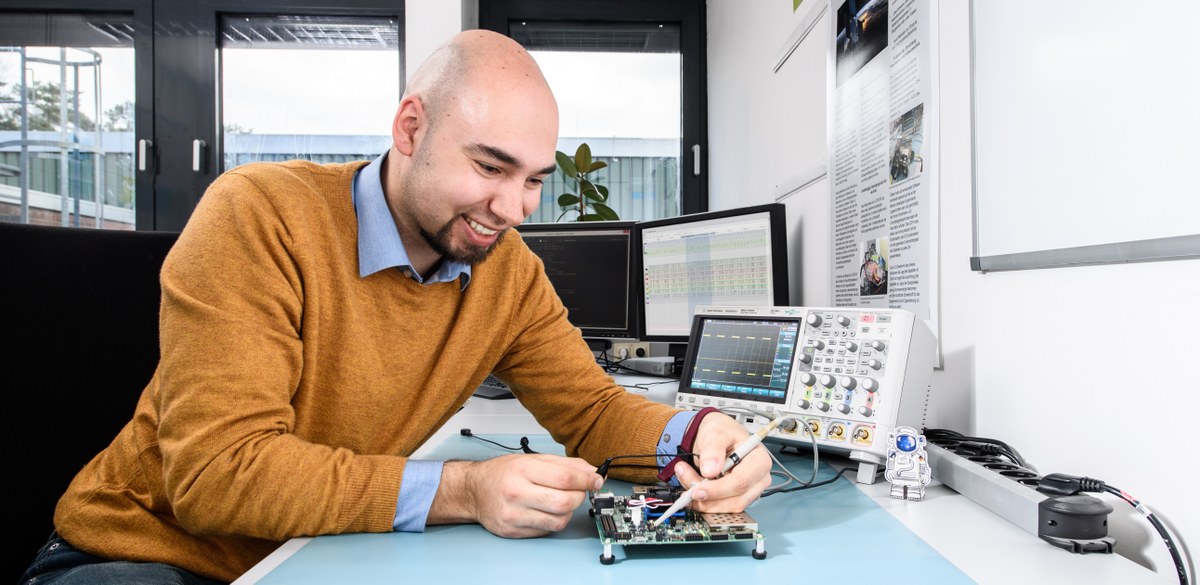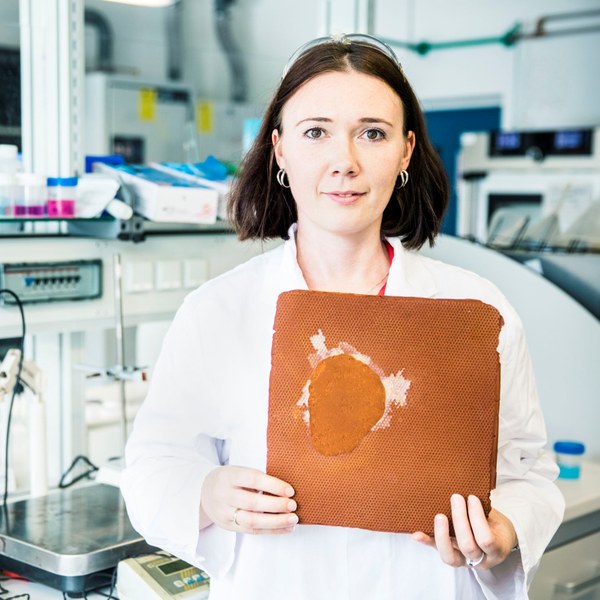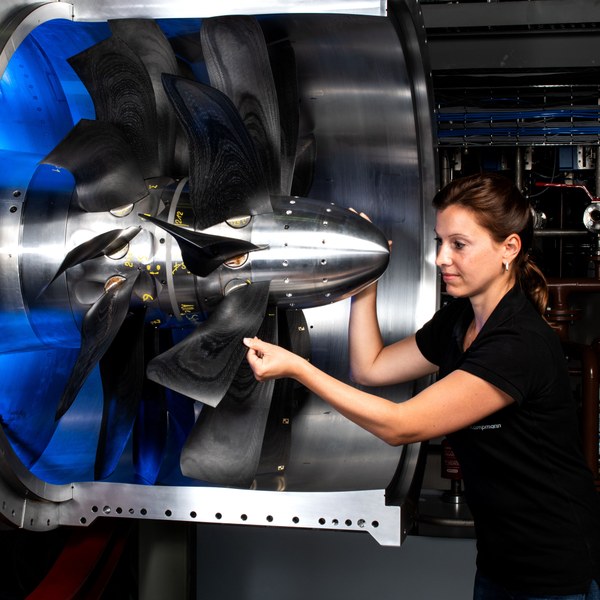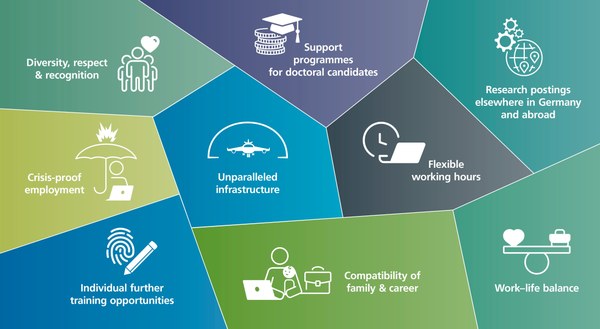Jan Sommer
Field of study: Space sciences and engineering (SpaceMaster)
Now: Institute for Software Technology
Jan Sommer studied Space Science and Engineering. Since 2015, he has been working as a research associate in the Department of Software for Space Systems and Interactive Visualisation at the DLR Institute for Software Technology. We caught up with him to learn more about his work.
Jan, what do you look forward to when coming to work in the morning?
Jan: Our department covers a range of topics, so I always enjoy exchanging views with colleagues from other teams – over a cup of tea, of course.
What are you researching or working on?
Jan: I mainly deal with issues related to the development of on-board software for space systems. This could be for satellites, experiments on sounding rockets or even an experiment for the International Space Station (ISS).
Much of my work involves designing and developing the software for each project. I also research new technologies to improve the reliability of software. These results can then be directly incorporated into projects.
What does your typical working day involve?
Jan: Just as the hardware for our experiments and missions is specially developed, all the software is tailor-made. So at the start of each project, I have to familiarise myself with the hardware platform. We usually get a development board for our desks. Then, when the initial components of the flight hardware are ready, we perform further software tests in the clean room. And finally, of course, there is the test flight.
„On-board software plays a major role in these projects, as there are usually no second chances in spaceflight“
However, much of my work is simply communication. The on-board computer is a control centre and communicates with many other parts of the system. The same applies to the members of the various working groups. We have to coordinate our work to ensure that everything runs smoothly.
Where and how is your work being used?
Jan: I’m currently involved in three projects: ReFEx, BECCAL and Alina. The aim of ReFEx is to test the re-entry of a rocket launch stage. With BECCAL, we’re trying to run a quantum experiment on the ISS and with Alina, we’re helping PTScientists to land on the Moon.
On-board software plays a major role in these projects, as there are usually no second chances in spaceflight. We have to control a large number of sensors and actuators in real time, so that the spacecraft can successfully land or enter the atmosphere.
What are the highlights of your work?
Jan: The Eu:CROPIS satellite was launched into space from Vandenberg Air Force Base in California. My colleagues and I were involved in developing its on-board software, so during take-off we were at the Space Operations Centre in Oberpfaffenhofen, standing by to answer questions about the on-board software during this critical first phase. The shift work during that period was exhausting, but it was also very satisfying to see the airborne result of three years’ work. Events like that really bring the whole team together.
„Very satisfying to see the airborne result of three years’ work“
In general, space travel is a relatively small and highly international sector. You see this at workshops or conferences. This year, for example, I presented a paper at the IEEE Aerospace Conference in Montana in the United States. With several hundred speakers from around the world, you have the chance to learn about all sorts of topics.
What special skills can you make good use of in your job?
Jan: The role of software in aerospace projects is becoming increasingly important, and the demands placed upon it are ever more complex. Our software must control or communicate with a multitude of different subsystems. For me, this means liaising with colleagues from a very wide range of different areas to provide them with the best possible support. Fortunately, my Master’s programme was very broad-based and multi-disciplinary, so I can relate to the main issues that engineers have to deal with.
Leave us a final thought.
Jan: For me, what differentiates DLR from employers in the industrial sector is the comparatively high degree of freedom we have in our work. Although we know where we want our projects to go, we’re not usually told exactly how to achieve this, and discovering the solution is part of the research assignment. That means it’s relatively easy to contribute your own ideas to projects and implement them with your own initiative.




